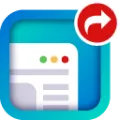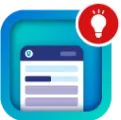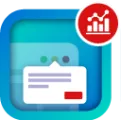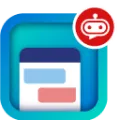Create a Dashboard for Your Community
- Create custom report types based on the Networks object.Only reports that are based on the Networks objectshow community-specific information in Community Management and Community Workspaces.Note You can create reports based on other objects and expose them in Community Management or Community Workspaces. Keep in mind that they show data from across your organization, not just for the community in which you’re viewing them.Select Networks as the primary object.Select a child object:Chatter MessagesFeed RevisionsGroupsNetwork AuditsNetwork Activity Daily MetricsNetwork Feed RevisionsNetwork MembersNetwork Membership Daily MetricsNetwork ModerationsNetwork Public Usage Daily MetricsNetwork Unique Contributor Daily MetricsRecommendation MetricTopic AssignmentsTopicsUnpublished Feed Entities
- Select Networks as the primary object.
- Select a child object:Chatter MessagesFeed RevisionsGroupsNetwork AuditsNetwork Activity Daily MetricsNetwork Feed RevisionsNetwork MembersNetwork Membership Daily MetricsNetwork ModerationsNetwork Public Usage Daily MetricsNetwork Unique Contributor Daily MetricsRecommendation MetricTopic AssignmentsTopicsUnpublished Feed Entities
- Chatter Messages
- Feed Revisions
- Groups
- Network Audits
- Network Activity Daily Metrics
- Network Feed Revisions
- Network Members
- Network Membership Daily Metrics
- Network Moderations
- Network Public Usage Daily Metrics
- Network Unique Contributor Daily Metrics
- Recommendation Metric
- Topic Assignments
- Topics
- Unpublished Feed Entities
- Use the custom report type to create a report.Be sure not to filter the report by Network ID toensure that the report dynamically displays data for the community you viewit from. Adding a Network ID filter causes the report to only show data for the community with that Network ID, regardless of which community you view it in.
- Create a dashboard with components. Select the report as your source type.Add a component for each report you want to include in your dashboard.Find your report on the Data Sources tab and add it to the component.For a Salesforce Classic dashboard to optimally render in the Lightning viewused in Community Management and Community Workspaces, make sure that yourdashboard meets these requirements.Includes only up to 20 reports arranged within three columnsDoesn’t include unsupported charts, such as funnel, scatter, table, multi-metric, pie, and gaugeFor a list of dashboard features notsupported in the Lightning view, see Reports and Dashboards: Lightning Experience Limitations.Note Metrics are supported in the Lightning view, but they display as large tiles. We recommended that you don’t include metrics in your dashboards.
- Add a component for each report you want to include in your dashboard.
- Find your report on the Data Sources tab and add it to the component.
- Includes only up to 20 reports arranged within three columns
- Doesn’t include unsupported charts, such as funnel, scatter, table, multi-metric, pie, and gaugeFor a list of dashboard features notsupported in the Lightning view, see Reports and Dashboards: Lightning Experience Limitations.
- Share the folder that you save your dashboard in with your community managers.
- From Community Management orCommunity Workspaces, click Dashboards | Settings to map your dashboard.





